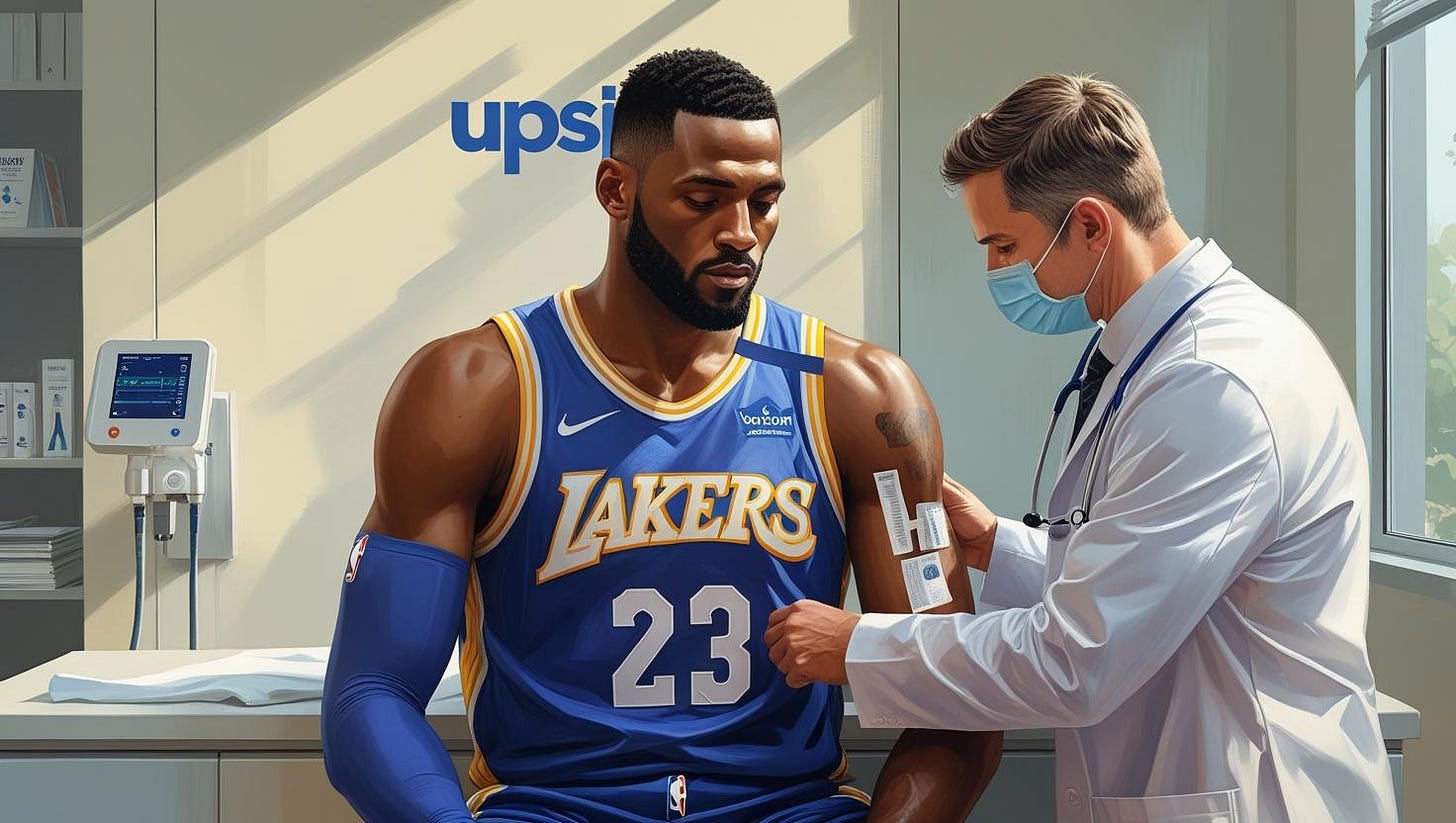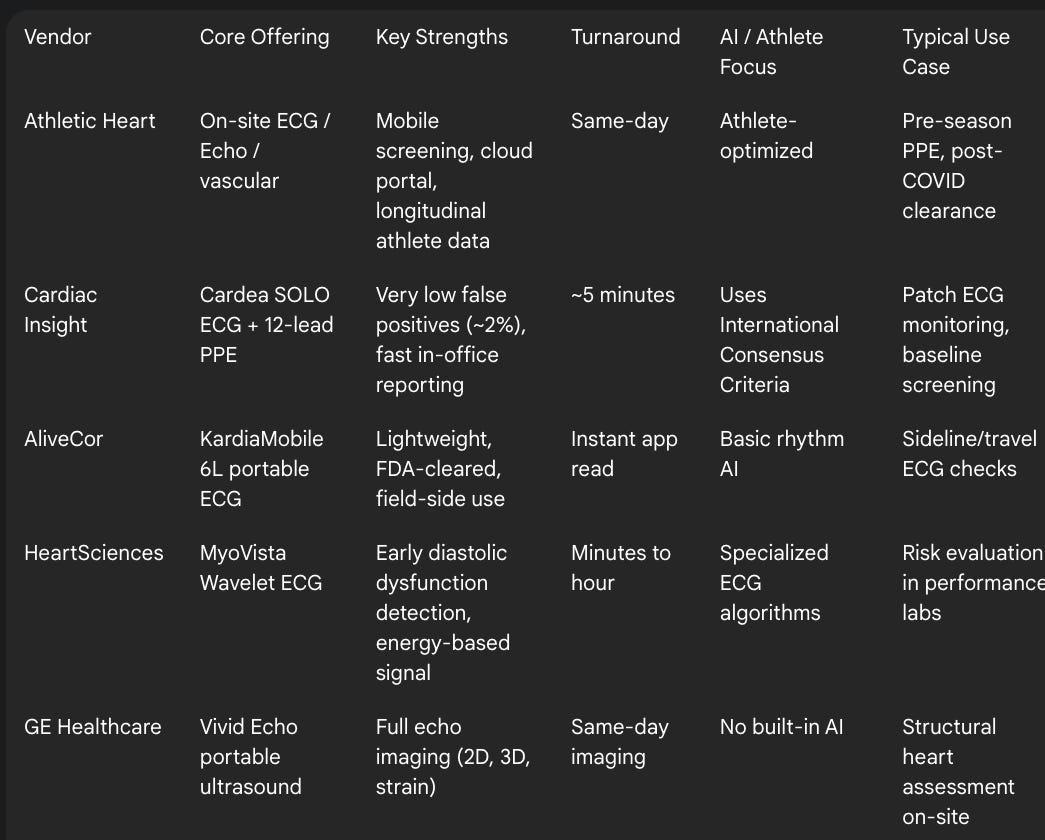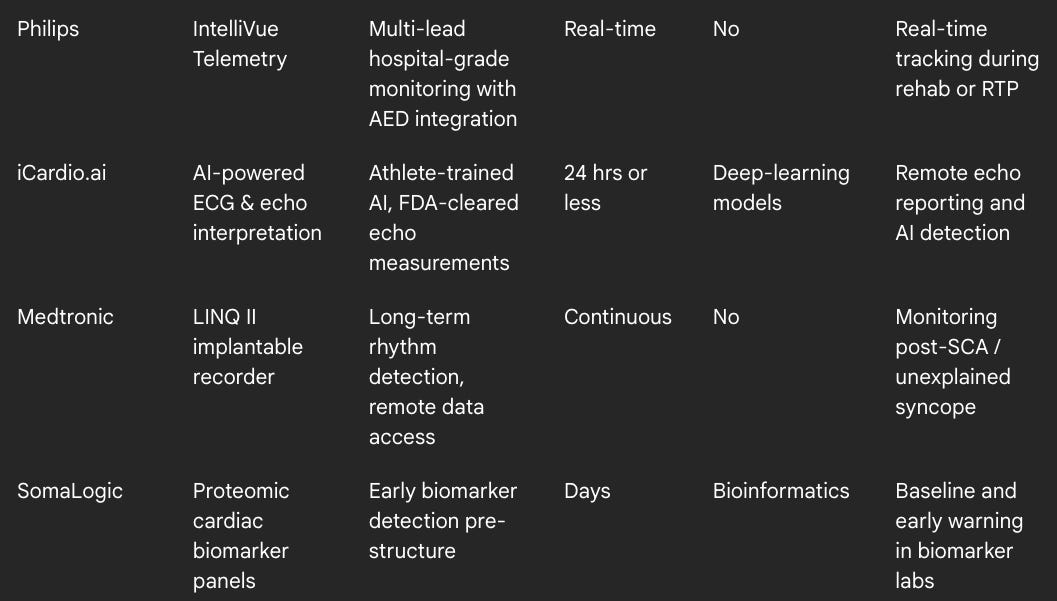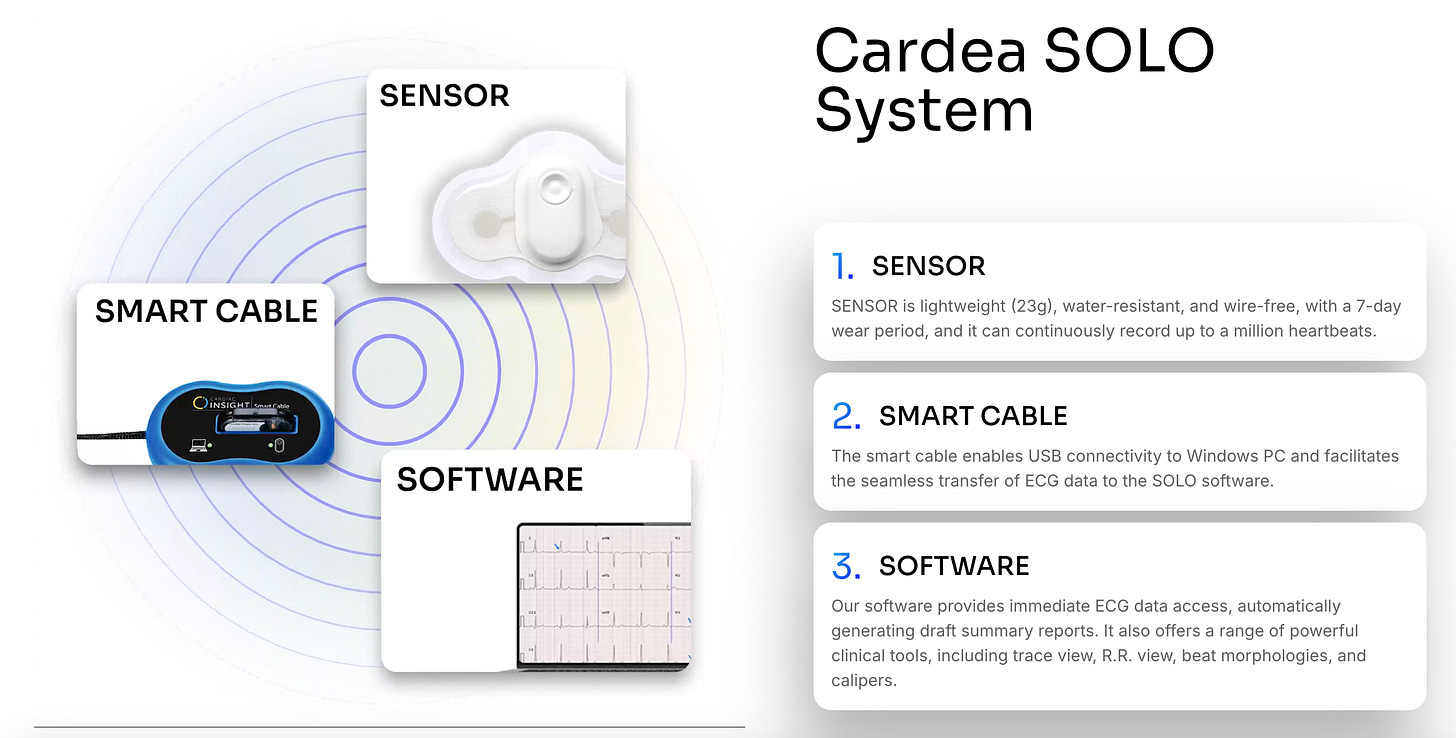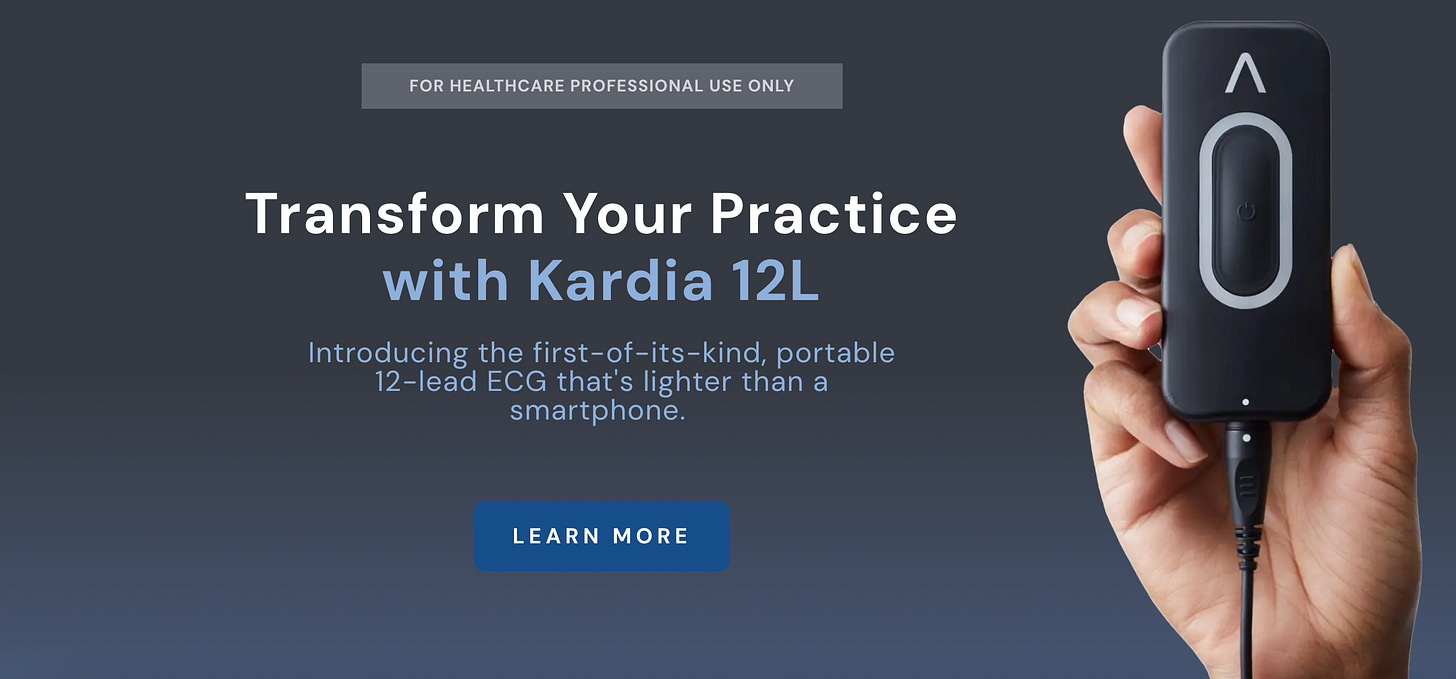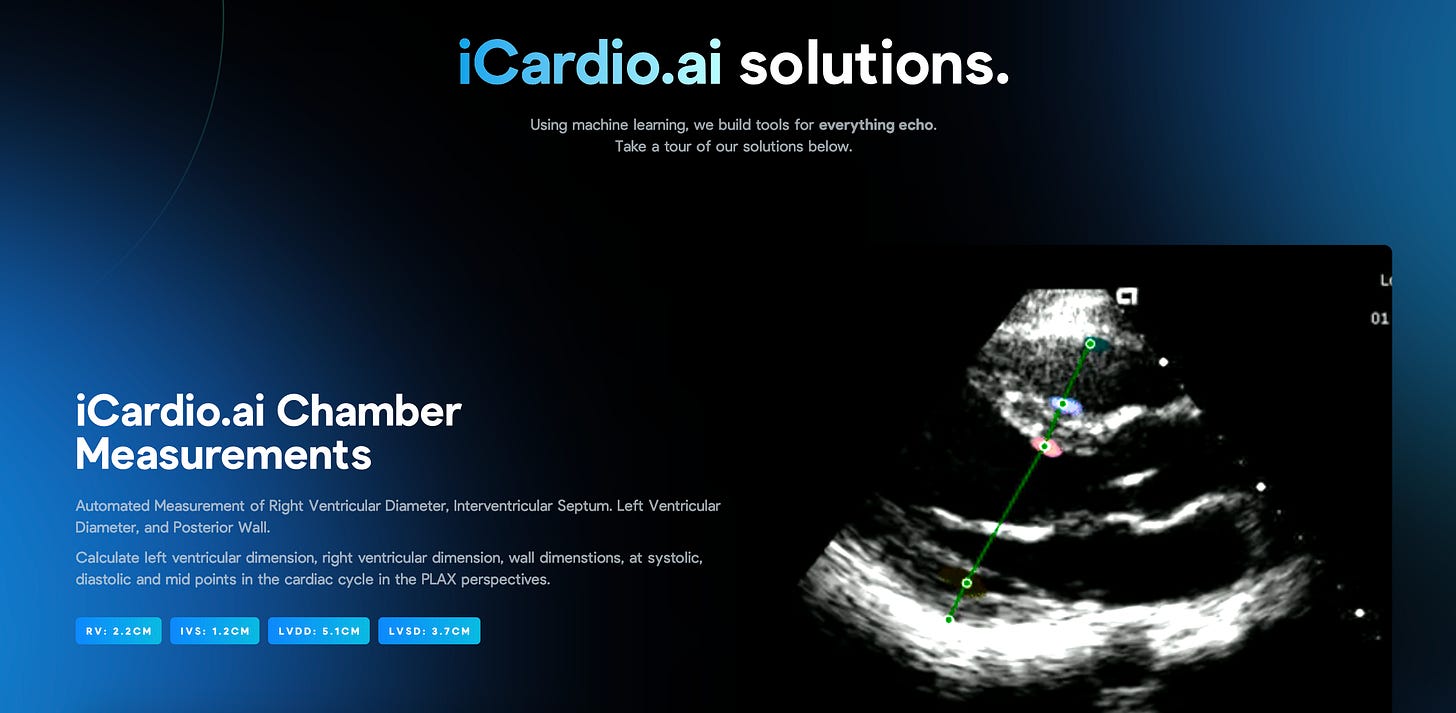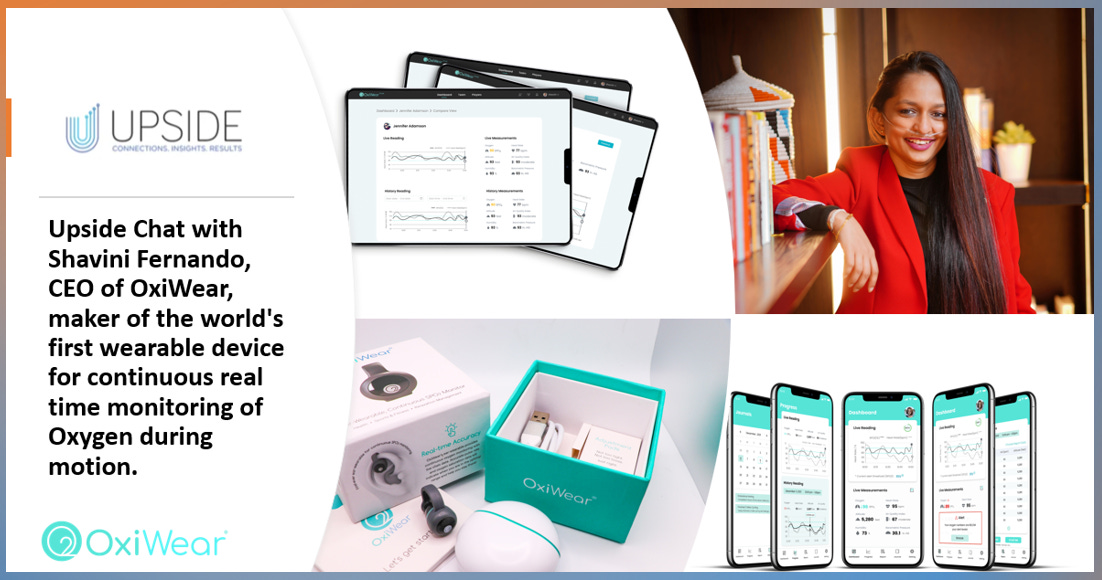💙 Upside Analysis: The Cardiac Screening Vendor Ecosystem in Elite Sports: Key Drivers, Challenges, Stats, Studies, Vendors, Recommendations to Teams
Sudden cardiac arrest (SCA) remains the leading cause of non-traumatic death in young athletes. As elite sports become faster, more physical, and more demanding, the cardiovascular system endures greater stress. Consequently, the importance of comprehensive cardiac screening has surged across all levels of professional and collegiate sports. From pre-participation evaluations (PPEs) to real-time cardiac telemetry and AI-enabled interpretation of ECGs and echocardiograms, the vendor ecosystem supporting athlete heart health is undergoing a technological and strategic evolution.
The cardiac screening market in elite sports is no longer limited to a one-off ECG. Today, it involves a multimodal approach: structural imaging (echo, MRI), genetic screening, wearables for rhythm monitoring, cardiac biomarker testing, and longitudinal health tracking. Teams and leagues are increasingly partnering with niche cardiac health vendors to mitigate health risks, comply with governing body mandates, and ensure athlete readiness for high-performance play.
Key Drivers
Increased Awareness of Athlete Cardiac Risk
High-profile collapses and fatalities—such as those involving Christian Eriksen, Damar Hamlin, and Fabrice Muamba—have elevated public and institutional attention on cardiac health. These events have accelerated policy changes, sparked research funding, and motivated leagues to invest in robust cardiac care protocols.
Evolving Medical Guidelines
Leading bodies such as the European Society of Cardiology (ESC), American Heart Association (AHA), FIFA, and IOC now recommend or require baseline cardiac screening for elite athletes. Many leagues, such as the English Premier League (EPL) and National Basketball Association (NBA), mandate pre-season cardiac evaluations including ECG and echocardiography.
Technological Innovation
New AI-driven tools can now interpret athlete ECGs with high accuracy, reducing false positives and increasing confidence in RTP decisions. Portable ultrasound, wearable single-lead and multi-lead ECGs, and cardiac MRI advancements also enable deeper diagnostic capability on- or off-site.
COVID-19 and Myocarditis Awareness
The COVID-19 pandemic introduced new risks associated with viral myocarditis, prompting the addition of cardiac testing to post-COVID RTP protocols. This expanded the scope of cardiac screening beyond structural conditions to also include inflammation and arrhythmic risk.
Integration with Athlete Monitoring Systems
The integration of cardiac data with performance and recovery data (GPS, HRV, Oura, Whoop, etc.) provides a 360-degree view of athlete health. Teams are demanding vendors who can integrate cardiac telemetry into broader athlete management systems (AMS).
Key Challenges
Interpretation Complexity
Athletes often have physiologically enlarged or hypertrophied hearts—a condition known as “athlete’s heart”—which can mimic pathological findings. Differentiating between benign adaptation and dangerous cardiomyopathy requires skilled interpretation, something not all general cardiologists or teams can provide.
Cost and Operational Barriers
Cardiac MRIs, portable echocardiography, and continuous monitoring come with high costs. Smaller teams, colleges, or clubs with limited budgets may not afford frequent or in-depth cardiac diagnostics.
Variability in Standards
While top leagues have mandates, smaller leagues, federations, or academies often lack standardized screening protocols. This leads to inconsistent adoption and variability in athlete safety.
Data Security and Ethical Issues
Handling of sensitive cardiac health data raises ethical and legal questions—particularly regarding RTP decisions, athlete privacy, and insurance implications. Teams must ensure GDPR, HIPAA, and local compliance.
Psychological Implications
A false positive or ambiguous cardiac diagnosis can result in significant psychological distress for athletes—especially young or emerging professionals. There is a growing need for psychological support as part of the cardiac screening ecosystem.
Real‑world Lawsuit with Missed Diagnosis Example
$24 Million Settlement for College Athlete with Undiagnosed Coronary Anomaly
Source: Becker Law Firm blog (October 2021), widely cited by legal and sports medicine commentators (Source here)
Summary:
A college athlete experienced shortness of breath and chest pain during practice.
Referral to cardiology included standard exercise testing, but no imaging was ordered, and a coronary artery anomaly was overlooked.
The athlete later suffered a sudden cardiac arrest, resulting in anoxic brain injury.
His coaches lacked CPR and AED training; he remained in arrest for over 8 minutes before resuscitation.
The firm reached a $24 million settlement, citing failures in both diagnosis and emergency response preparedness.
Key Stats
SCA in athletes:
Harmon KG, Asif IM, Klossner D, Drezner JA.
Title: Incidence of sudden cardiac death in National Collegiate Athletic Association athletes
Journal: Circulation. 2011;123(15):1594–1600 (Source here)Main Findings:
Overall SCD incidence in NCAA athletes:
1 in 43,000 athletes/year
By race and sport:
Black Division I male basketball players:
Incidence was 1 in 5,200 athlete-years (very high risk group)
Male athletes: Significantly higher risk than female athletes
Basketball and football: Sports with the highest incidence.
Harmon KG, Zigman M, Drezner JA.
Title: The effectiveness of screening history, physical exam, and ECG to detect potentially lethal cardiac disorders in athletes: A systematic review/meta-analysis
Journal: Br J Sports Med. 2015;49(7):413–416 (Source here)Physical exam + history alone misses ~80% of at-risk athletes.
ECG screening can significantly improve detection rates (up to 70–80% sensitivity depending on interpretation criteria used).
ECG abnormalities prevalence in athletes: ~30–40%; 10–15% possibly pathological (Source here)
ECG false-positive without athlete criteria: up to 25%—reduced to ~3% with updated criteria (Source here).
Survival with defibrillation <3 min: ~74%
SCD reduction in Italy with screening: ~89%; early echo/ECG evaluation effective (Source here)
Key Use Cases
Pre-Season and Pre-Participation Evaluations (PPEs)
Teams perform baseline ECGs, Echos, and in some cases, stress tests or MRIs to rule out congenital or structural heart defects.
Real-Time Monitoring During Training
Wearable cardiac monitors allow for telemetry-style rhythm monitoring during high-exertion sessions, useful in detecting arrhythmias or abnormal HR recovery.
Return-to-Play Clearance
Cardiac screening is now standard following myocarditis, heat stroke, or concussion due to possible cardiac involvement. This is especially critical post-COVID-19.
Longitudinal Health Monitoring
Vendors now offer athlete heart profiling over multiple seasons, observing structural adaptations or degenerative trends that could increase risk.
Emergency Preparedness
AEDs and response protocols are being complemented with cloud-based alert systems that trigger notifications to staff during cardiac events. Some vendors now bundle AED access and training into service packages.
Key Studies
Corrado et al. (2006, NEJM): Implementing ECG/echo screening in Italy cut SCD by ~89% (Source here).
Petek & Baggish (2020, PMC Review): Reviews controversy over ECG and imaging use in pre-participation screening (Source here)
Riding et al./Dhutia et al. (2018): Athlete-specific ECG criteria and AI reduce false positives to ~3% (Source here)
Outcomes in Adolescent Soccer Players (2017, NEJM): Among 42 detected cardiac issues, 95% confirmed (Source here)
Athletic Heart echo COVID-clearance: Baseline vs post-COVID echo comparison improved detection (Source here)
Key Vendors
Source: Upside Global, July 2025
Here is a comparison of the various vendors:
Source: Upside Global, July 2025
Athletic Heart
Site: https://athletic-heart.com
Athletic Heart provides mobile and on-site cardiac screening services tailored to athletes. Their platform includes ECG, echocardiograms, carotid artery studies, and ABI tests, with results uploaded to a HIPAA-compliant cloud platform for rapid turnaround. The company emphasizes longitudinal heart health by capturing athlete baseline data and offering comparative follow-up screens. Athletic Heart screens in all the professional leagues in NBA, MLS, NHL, MLB, NFL, NCAA Power 5 and Tactical Athletes (Military). They also offers customized protocols for COVID clearance and emergency preparedness programs. Athletic Heart is also screening retired athletes in their post career.
Here is a video testimonial about the importance of cardiac screening. Joe Rogowski, founder of Athletic Heart also explained how he used the technology during his time at the Orlando Magic (NBA):
Cardiac Insight
Site: https://cardiacinsightinc.com
Cardiac Insight is known for its Cardea SOLO ECG, a lightweight, wearable ECG patch designed for continuous, real-time rhythm monitoring over multiple days. With built-in AI for arrhythmia detection, the device enables early intervention and athlete-specific rhythm profiling. Their system supports streamlined data upload and clinician review, making it well-suited for high-performance environments with limited access to full-time cardiac staff.
AliveCor
Site: https://www.alivecor.com
AliveCor developed the KardiaMobile 6L, a portable 6-lead ECG that fits in a pocket and pairs with a smartphone app. Used by physicians and trainers alike, it provides AI-powered detection of atrial fibrillation, bradycardia, and tachycardia. Its convenience makes it popular for field-side screening, travel monitoring, and in remote athlete management situations. It's also FDA-cleared, making it a trusted device in clinical and performance settings.
HeartSciences
Site: https://www.heartsciences.com
HeartSciences offers the MyoVista Wavelet ECG, which uses advanced signal processing to detect early-stage cardiac dysfunction—especially diastolic abnormalities. Unlike conventional ECGs, it provides insight into energy-related changes in heart function, which can precede structural damage. This tool is gaining traction in performance labs and research institutions looking to screen athletes for subclinical heart disease risk.
GE Healthcare
Site: https://www.gehealthcare.com
GE’s Vivid series of portable ultrasound devices is widely used for echocardiographic assessment in elite sports. These machines offer high-resolution 2D, 3D, and strain imaging, helping clinicians evaluate chamber size, valve function, and myocardial performance. Used by NFL, NBA, and Olympic teams, the Vivid line is considered a gold standard in on-the-go heart imaging.
Philips Healthcare
Site: https://www.usa.philips.com/healthcare
Philips provides IntelliVue telemetry systems that enable multi-lead heart rhythm monitoring across care environments. Though traditionally used in hospitals, Philips systems are being deployed in high-performance centers for real-time cardiac tracking, particularly during post-injury rehab or RTP evaluations. Their AED integration and remote monitoring capabilities make them valuable for medical preparedness at team facilities.
iCardio.ai
Site: https://www.icardio.ai
iCardio.ai is a cloud-based AI diagnostic platform specializing in ECG and echocardiography interpretation. What sets them apart is their training on athlete-specific datasets, reducing false positives that typically result from athletic cardiac remodeling. The platform supports fast, remote diagnostics and is currently being piloted or used by clubs in the EPL, Ligue 1, and Bundesliga.
Medtronic
Site: https://www.medtronic.com
Medtronic’s LINQ II device is an implantable loop recorder that continuously monitors heart rhythms over months or years. It is used in elite sports for athletes with unexplained fainting, post-SCA incidents, or those undergoing long-term surveillance. The device offers remote data upload and real-time alerts, making it valuable for both RTP decisions and long-term cardiac management.
SomaLogic
Site: https://www.somalogic.com
SomaLogic delivers blood-based proteomics panels that provide insights into inflammation, stress, and cardiovascular risk. Their SomaScan® platform identifies over 7,000 proteins from a single sample, offering teams an early biomarker-based warning system before structural or rhythm abnormalities occur. SomaLogic partners with elite labs serving NBA, NFL, and international federations focused on precision performance monitoring.
Future of Cardiac Screening in Elite Sports
The future of cardiac screening lies at the intersection of precision health, AI, and passive monitoring. Key trends include:
AI-First Interpretation: AI will take over the first pass on ECGs and Echos, flagging only abnormal or ambiguous cases to human specialists—dramatically improving efficiency and reducing costs.
Non-Invasive, Passive Monitoring: Smart textiles, bio-patches, and even skin-contactless radar will allow passive rhythm and HR variability monitoring, ideal for team environments.
Digital Twins & Predictive Modeling: Cardiac data will be part of comprehensive athlete digital twins, enabling real-time stress modeling and pre-emptive interventions.
Cloud-Integrated Screening Hubs: Centralized cloud screening systems (via vendors like Athletic Heart or iCardio.ai) will enable federations and leagues to store, interpret, and track cardiac health at scale.
Genomic and Proteomic Expansion: Teams will begin incorporating genetic screening and blood-based proteomic markers to assess predisposition to conditions like arrhythmias or cardiomyopathies.
Recommendations to Teams
Implement Tiered Screening Protocols: Use athlete-specific criteria and escalate from ECG to Echo, MRI, or biomarkers only when necessary.
Develop Emergency Cardiac Protocols: Beyond AEDs, use digital AED alerting platforms and integrate response plans into practice and game environments.
Adopt Longitudinal Cardiac Health Tracking: Choose vendors like Athletic Heart that enable longitudinal heart health data and integrate into athlete management systems.
Train Interdisciplinary Staff: Educate performance, rehab, and mental health staff on the implications of cardiac findings and risk management.
Leverage AI Vendors with Athlete-Specific Datasets: Ensure the vendor’s AI models have been trained on elite athletic ECGs—not general population datasets.
Integrate Cardiac Screening with Load Monitoring: Combine cardiac stress data with GPS, RPE, and wellness questionnaires to identify athletes under excessive load.
Build Relationships with Cardiac Experts: Partner with sports cardiologists who understand the nuances of the athletic heart vs pathology.
You may also like:
📈 🏈 Upside Studies: Cardiac Arrest & Neurologic Recovery: Insights from the Case of Mr. Damar Hamlin
Title: Cardiac Arrest & Neurologic Recovery: Insights from the Case of Mr. Damar Hamlin
⭐Upside Chat with Shavini Fernando, CEO of OxiWear, Maker of the World's First Wearable Device for Continuous Real Time Monitoring of Oxygen During Motion.
This week, we have the honor to interview Shavini Fernando, CEO of OxiWear, maker of the world's first wearable device for continuous real time monitoring of Oxygen during motion.

